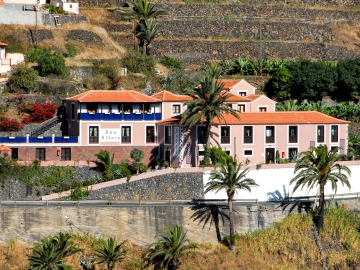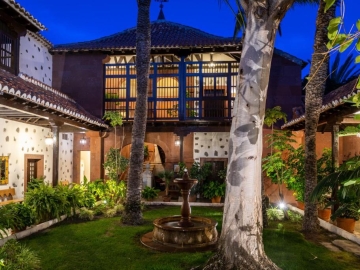Our top pick of the best small boutique hotels in La Gomera, luxury hotels, holiday homes and villas in La Gomera
La Gomera - Full of tradition!
Have a look at the wide range of the best hotels, pousadas and manor houses in La Gomera.
Selection of small boutique hotels, charming bed & breakfasts, romantic getaways, stylish and cool holiday flats and luxury villas in La Gomera:
-

Ibo Alfaro
Hotel- Spain
- /
- Canary Islands
- /
- La Gomera
- /
- Hermigua
Discover the serene Ibo Alfaro, a 150-year-old restored country hotel on the island of La Gomera. Perched on a slope, it offers breathtaking views of the valley and the Atlantic. Enjoy breakfast in a terraced garden, stay in rooms with ocean vistas, and explore nearby Garajonay National Park's unique flora and rainforest.- Countryside
- |
- 17 rooms
- |
- from 85 EUR
-

Parador de la Gomera
PousadaTraditional Canary Island Parador. Heavenly set on a cliff with the sea and the Teide in the background, this luxury hotel has fabulous views of the ocean, gardens brimming with sub-tropical exotic plants, and typical island architecture.- Seaside (ocean front)
- |
- 60 rooms
- |
- from 145 EUR

